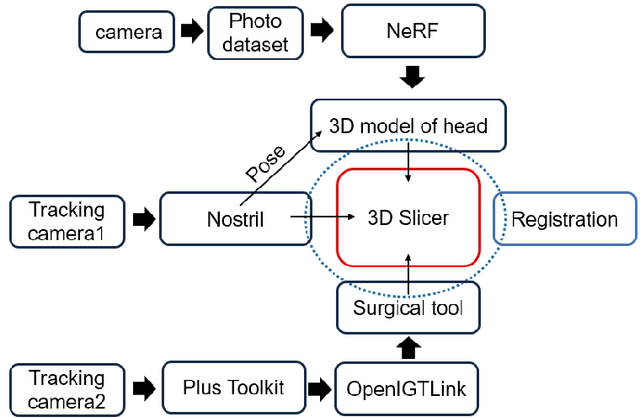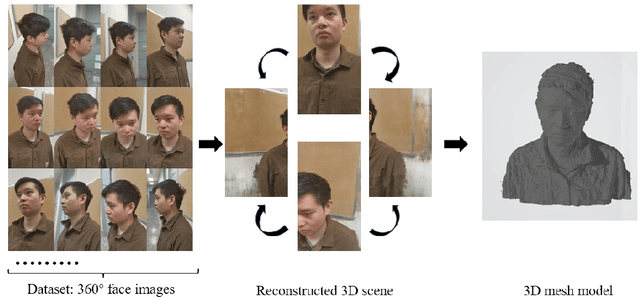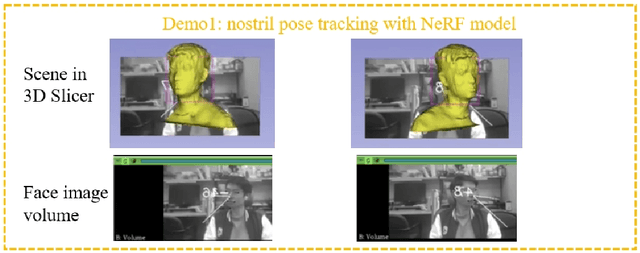Ruijie Tang
Head Pose Estimation and 3D Neural Surface Reconstruction via Monocular Camera in situ for Navigation and Safe Insertion into Natural Openings
Jun 18, 2024



Abstract:As the significance of simulation in medical care and intervention continues to grow, it is anticipated that a simplified and low-cost platform can be set up to execute personalized diagnoses and treatments. 3D Slicer can not only perform medical image analysis and visualization but can also provide surgical navigation and surgical planning functions. In this paper, we have chosen 3D Slicer as our base platform and monocular cameras are used as sensors. Then, We used the neural radiance fields (NeRF) algorithm to complete the 3D model reconstruction of the human head. We compared the accuracy of the NeRF algorithm in generating 3D human head scenes and utilized the MarchingCube algorithm to generate corresponding 3D mesh models. The individual's head pose, obtained through single-camera vision, is transmitted in real-time to the scene created within 3D Slicer. The demonstrations presented in this paper include real-time synchronization of transformations between the human head model in the 3D Slicer scene and the detected head posture. Additionally, we tested a scene where a tool, marked with an ArUco Maker tracked by a single camera, synchronously points to the real-time transformation of the head posture. These demos indicate that our methodology can provide a feasible real-time simulation platform for nasopharyngeal swab collection or intubation.
Joint Sparse Representations and Coupled Dictionary Learning in Multi-Source Heterogeneous Image Pseudo-color Fusion
Oct 15, 2023



Abstract:Considering that Coupled Dictionary Learning (CDL) method can obtain a reasonable linear mathematical relationship between resource images, we propose a novel CDL-based Synthetic Aperture Radar (SAR) and multispectral pseudo-color fusion method. Firstly, the traditional Brovey transform is employed as a pre-processing method on the paired SAR and multispectral images. Then, CDL is used to capture the correlation between the pre-processed image pairs based on the dictionaries generated from the source images via enforced joint sparse coding. Afterward, the joint sparse representation in the pair of dictionaries is utilized to construct an image mask via calculating the reconstruction errors, and therefore generate the final fusion image. The experimental verification results of the SAR images from the Sentinel-1 satellite and the multispectral images from the Landsat-8 satellite show that the proposed method can achieve superior visual effects, and excellent quantitative performance in terms of spectral distortion, correlation coefficient, MSE, NIQE, BRISQUE, and PIQE.
 Add to Chrome
Add to Chrome Add to Firefox
Add to Firefox Add to Edge
Add to Edge